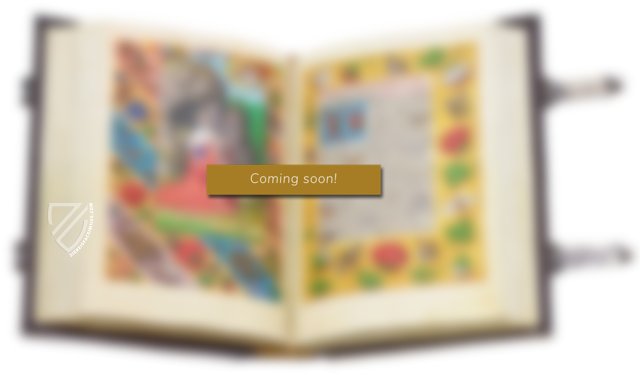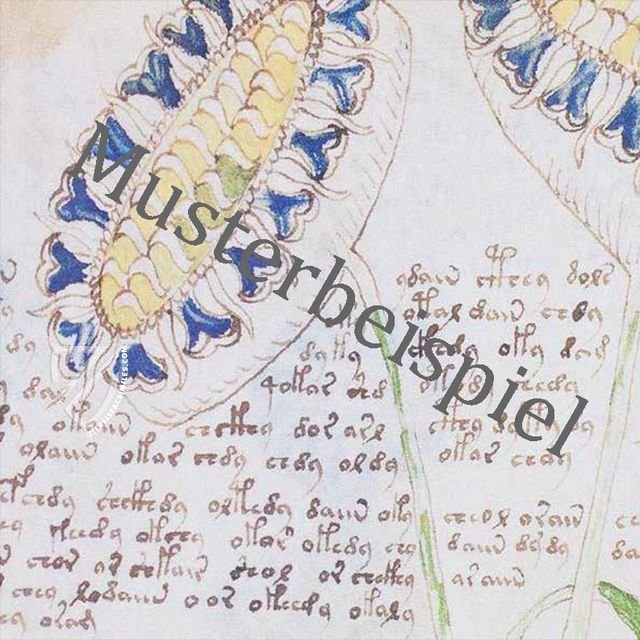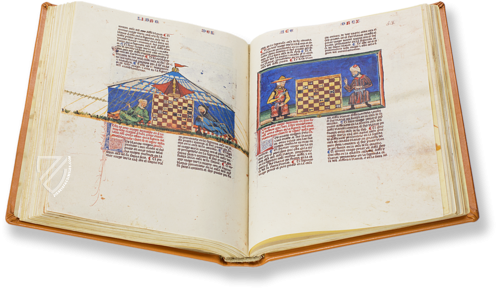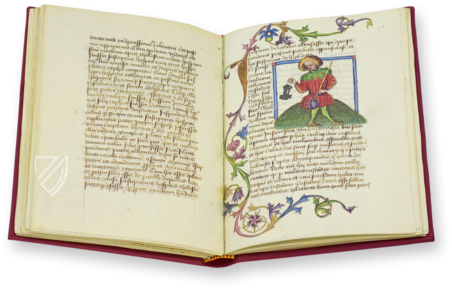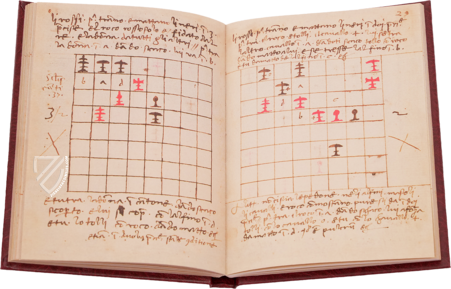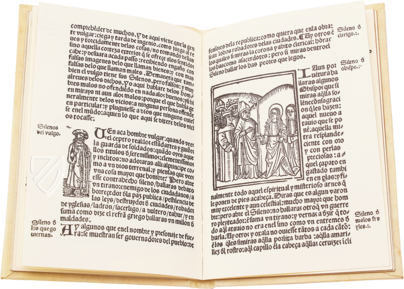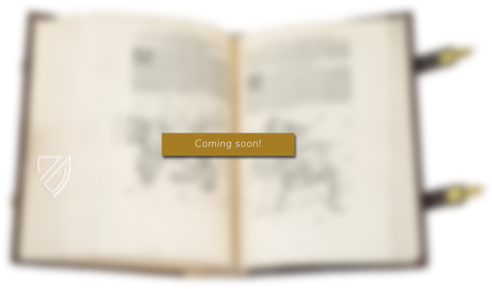The Game of Chess by William Caxton
(under 1,000€)
William Caxton was an English merchant, diplomat, and writer who is believed to have brought the first printing press to England. One of the first books to be printed in the English language was The Game and Playe of Chesse, which was published in 1474 and is based on the work of Jacobus de Cessolis. It presents the game of chess as an allegory for medieval society and used chess pieces as metaphors for different classes of people. The work also emphasizes the roles played by various members of the social hierarchy and the obligations they owe to one another. The second edition from 1483 was additionally furnished with 16 artful woodcuts that illustrate the various chess pieces and their corresponding members of society.
The Game of Chess by William Caxton
Despite its name, The Game and Playe of the Chesse has very little to say about the game of chess or how it is played, but rather uses it as an allegory for how members of society both great and small can contribute to the common good. The rules of the game and the appearance of individual pieces were used to describe the duties of different professions. It is based on the Liber de moribus hominum et officiis nobilium super ludo scacchorum (Book of the customs of men and the duties of nobles or the Book of Chess) by Dominican friar Jacobus de Cessolis (ca. 1250 – ca. 1322), which was translated and printed by William Caxton (ca. 1422 – ca. 1491), an English merchant, diplomat, and writer active in the Low Countries and the Rhineland. After the success of the original edition, which was printed in Bruges or Utrecht sometime after March 31st, 1474, a second illustrated edition was published in 1483 at Caxton’s new printing house in Westminster.
A Society Governed by Moral Law
The text begins with the king, queen, bishops (who serve as judges), knights, and rooks (who serve as the king’s emissaries). It then introduces the eight pawns, each of which represents a different group of commoners including farmers, innkeepers, moneychangers, doctors, and various artisans. Each profession is presented with a list of moral codes: e.g. knights are charged with the safety of the realm and the queen, as mother of the future ruler, should be chaste, wise, honest, and well-mannered. These virtues are followed by exempla, short moralizing stories, and sententiae, truisms usually based in stories from classical antiquity. Only in the final chapter are any rules of play discussed, and only in a cursory fashion for the purpose of explaining the metaphor: e.g. the king’s movements are limited to one space at a time because of his dignity and the knight is positioned behind those who make his sword and saddle. The work envisions a society of professional ties and associations governed by moral law instead of kinship.
The (Second) Oldest English Printed Book
It was long believed that The Game and Playe of Chesse was the first book printed in the English language but in fact is predated by another work that was also translated and printed by Caxton. He began translating The Recuyell of the Histories of Troy in 1469, continuing the work in Utrecht and completed in Cologne at the behest of Margaret of York (1446–1503), the Duchess of Burgundy and sister of two English kings, on September 9th, 1471. This collection of chivalric stories loosely based on the Trojan Wars became the first book to be printed in the English language in 1473 or early 1474. Printed shortly thereafter, The Game and Playe of the Chesse was dedicated to or commissioned by Margaret’s brother George, Duke of Clarence (1449–78). Margaret had been a major supporter of her brother, an important figure in the Wars of the Roses who was executed for treason against his brother King Edward IV (1442–83). As a result of his fall from grace, the dedication to George does not appear in the second edition from 1483.
Different Prologues, Different Audiences
The first difference between the editions lies in the prologues: the 1474 edition is directed at an aristocratic audience, makes overt references to royal authority, and is presented as a speculum regis or “mirror of princes” while the 1483 edition is directed to all classes of people, dedicated specifically to the city of London, and more closely resembles a mirror of a political body, a speculum corpora politica. This is a reflection of England’s chaotic contemporary political landscape because Edward IV had just died and the crown was seized by his brother Richard, the Duke of Gloucester, whose rule was never acknowledged in Southern England and Richard III would become the last English king to die in battle two years later.
The Second – Illustrated – Edition
The second major difference is that the second edition was furnished with 16 refined woodcuts depicting the various chess pieces / classes of people, but hardly any depictions of a chess board can be found in the work and none with practical advice to improve one’s play. The opening woodcut depicts the decapitated body of a king, identified as Nebuchadnezzar of Babylon in the accompanying passage, which consists of a commentary on royal authority. This representation of regicide would have had powerful implications in a kingdom divided by civil war and is a reminder of the limits monarchical authority because even the king is dependent on his counselors, who ensure that his royal will is done.
Caxton as Translator
The original Latin text of this chess-based allegory was written by Jacobus de Cessolis in the late 13th century. Enjoying great success, the work was translated into numerous languages and had already been translated into English by John Trevisa (fl. 1342–1402) at the end of the 14th century and Thomas Hoccleve (1368/69–1426) at the beginning of the 15th century. However, neither of these translations appears to have enjoyed any lasting success and were virtually unknown in Caxton’s lifetime. As such, Caxton’s translation, which he created from a pair of French sources including one by Jean de Vignay (ca. 1282/1285 – ca. 1350), became the authoritative English version.
Codicology
- Alternative Titles
- Das Schachspiel von William Caxton
The Game of Chess Translated by William Caxton
The Game and Playe of the Chesse
Liber de ludo scaccorum
De ludo scaccorum - Origin
- United Kingdom
- Date
- Ca. 1483
- Epochs
- Style
- Language
- Content
- English version of the Latin text Liber de Ludo Scaccorum by Jacobus de Cessolis
- Artist / School
- William Caxton (ca. 1422 – ca. 1491) (translator and publisher)
#1 The Game of Chess
Language: English
(under 1,000€)
#2 Deluxe Edition
- Treatises / Secular Books
- Apocalypses / Beatus
- Astronomy / Astrology
- Bestiaries
- Bibles / Gospels
- Chronicles / History / Law
- Geography / Maps
- Saints' Lives
- Islam / Oriental
- Judaism / Hebrew
- Single Leaf Collections
- Leonardo da Vinci
- Literature / Poetry
- Liturgical Manuscripts
- Medicine / Botany / Alchemy
- Music
- Mythology / Prophecies
- Psalters
- Other Religious Books
- Games / Hunting
- Private Devotion Books
- Other Genres
- Afghanistan
- Armenia
- Austria
- Belgium
- Belize
- Bosnia and Herzegovina
- China
- Colombia
- Costa Rica
- Croatia
- Cyprus
- Czech Republic
- Denmark
- Egypt
- El Salvador
- Ethiopia
- France
- Germany
- Greece
- Guatemala
- Honduras
- Hungary
- India
- Iran
- Iraq
- Israel
- Italy
- Japan
- Jordan
- Kazakhstan
- Kyrgyzstan
- Lebanon
- Liechtenstein
- Luxembourg
- Mexico
- Morocco
- Netherlands
- Palestine
- Panama
- Peru
- Poland
- Portugal
- Romania
- Russia
- Serbia
- Spain
- Sri Lanka
- Sweden
- Switzerland
- Syria
- Tajikistan
- Turkey
- Turkmenistan
- Ukraine
- United Kingdom
- United States
- Uzbekistan
- Vatican City
- A. Oosthoek, van Holkema & Warendorf
- Aboca Museum
- Ajuntament de Valencia
- Akademie Verlag
- Akademische Druck- u. Verlagsanstalt (ADEVA)
- Aldo Ausilio Editore - Bottega d’Erasmo
- Alecto Historical Editions
- Alkuin Verlag
- Almqvist & Wiksell
- Amilcare Pizzi
- Andreas & Andreas Verlagsbuchhandlung
- Archa 90
- Archiv Verlag
- Archivi Edizioni
- Arnold Verlag
- ARS
- Ars Magna
- ArtCodex
- AyN Ediciones
- Azimuth Editions
- Badenia Verlag
- Bärenreiter-Verlag
- Belser Verlag
- Belser Verlag / WK Wertkontor
- Benziger Verlag
- Bernardinum Wydawnictwo
- BiblioGemma
- Biblioteca Apostolica Vaticana (Vaticanstadt, Vaticanstadt)
- Bibliotheca Palatina Faksimile Verlag
- Bibliotheca Rara
- Boydell & Brewer
- Bramante Edizioni
- Bredius Genootschap
- Brepols Publishers
- British Library
- C. Weckesser
- Caixa Catalunya
- Canesi
- CAPSA, Ars Scriptoria
- Caratzas Brothers, Publishers
- Carus Verlag
- Casamassima Libri
- Centrum Cartographie Verlag GmbH
- Chavane Verlag
- Christian Brandstätter Verlag
- Circulo Cientifico
- Club Bibliófilo Versol
- Club du Livre
- CM Editores
- Collegium Graphicum
- Collezione Apocrifa Da Vinci
- Comissão Nacional para as Comemorações dos Descobrimentos Portugueses
- Coron Verlag
- Corvina
- CTHS
- D. S. Brewer
- Damon
- De Agostini/UTET
- De Nederlandsche Boekhandel
- De Schutter
- Deuschle & Stemmle
- Deutscher Verlag für Kunstwissenschaft
- DIAMM
- Droz
- E. Schreiber Graphische Kunstanstalten
- Ediciones Boreal
- Ediciones Grial
- Ediclube
- Edições Inapa
- Edilan
- Editalia
- Edition Deuschle
- Edition Georg Popp
- Edition Leipzig
- Edition Libri Illustri
- Editiones Reales Sitios S. L.
- Éditions de l'Oiseau Lyre
- Editions Medicina Rara
- Editorial Casariego
- Editorial Mintzoa
- Editrice Antenore
- Editrice Velar
- Edizioni Edison
- Egeria, S.L.
- Eikon Editores
- Electa
- Emery Walker Limited
- Enciclopèdia Catalana
- Eos-Verlag
- Ephesus Publishing
- Ernst Battenberg
- Eugrammia Press
- Extraordinary Editions
- Fackelverlag
- Facsimila Art & Edition
- Facsimile Editions Ltd.
- Facsimilia Art & Edition Ebert KG
- Faksimile Verlag
- Feuermann Verlag
- Folger Shakespeare Library
- Franco Cosimo Panini Editore
- Friedrich Wittig Verlag
- Fundación Hullera Vasco-Leonesa
- G. Braziller
- Gabriele Mazzotta Editore
- Gebr. Mann Verlag
- Gesellschaft für graphische Industrie
- Getty Research Institute
- Giovanni Domenico de Rossi
- Giunti Editore
- Graffiti
- Grafica European Center of Fine Arts
- Guido Pressler
- Guillermo Blazquez
- Gustav Kiepenheuer
- H. N. Abrams
- Harrassowitz
- Harvard University Press
- Helikon
- Hendrickson Publishers
- Henning Oppermann
- Herder Verlag
- Hes & De Graaf Publishers
- Hoepli
- Holbein-Verlag
- Houghton Library
- Hugo Schmidt Verlag
- Idion Verlag
- Il Bulino, edizioni d'arte
- ILte
- Imago
- Insel Verlag
- Insel-Verlag Anton Kippenberger
- Instituto de Estudios Altoaragoneses
- Instituto Nacional de Antropología e Historia
- Introligatornia Budnik Jerzy
- Istituto dell'Enciclopedia Italiana - Treccani
- Istituto Ellenico di Studi Bizantini e Postbizantini
- Istituto Geografico De Agostini
- Istituto Poligrafico e Zecca dello Stato
- Italarte Art Establishments
- Jan Thorbecke Verlag
- Johnson Reprint Corporation
- Josef Stocker
- Josef Stocker-Schmid
- Jugoslavija
- Karl W. Hiersemann
- Kasper Straube
- Kaydeda Ediciones
- Kindler Verlag / Coron Verlag
- Kodansha International Ltd.
- Konrad Kölbl Verlag
- Kurt Wolff Verlag
- La Liberia dello Stato
- La Linea Editrice
- La Meta Editore
- Lambert Schneider
- Landeskreditbank Baden-Württemberg
- Leo S. Olschki
- Les Incunables
- Liber Artis
- Library of Congress
- Libreria Musicale Italiana
- Lichtdruck
- Lito Immagine Editore
- Lumen Artis
- Lund Humphries
- M. Moleiro Editor
- Maison des Sciences de l'homme et de la société de Poitiers
- Manuscriptum
- Martinus Nijhoff
- Maruzen-Yushodo Co. Ltd.
- MASA
- Massada Publishers
- McGraw-Hill
- Metropolitan Museum of Art
- Militos
- Millennium Liber
- Müller & Schindler
- Nahar - Stavit
- Nahar and Steimatzky
- National Library of Wales
- Neri Pozza
- Nova Charta
- Oceanum Verlag
- Odeon
- Orbis Mediaevalis
- Orbis Pictus
- Österreichische Staatsdruckerei
- Oxford University Press
- Pageant Books
- Parzellers Buchverlag
- Patrimonio Ediciones
- Pattloch Verlag
- PIAF
- Pieper Verlag
- Plon-Nourrit et cie
- Poligrafiche Bolis
- Presses Universitaires de Strasbourg
- Prestel Verlag
- Princeton University Press
- Prisma Verlag
- Priuli & Verlucca, editori
- Pro Sport Verlag
- Propyläen Verlag
- Pytheas Books
- Quaternio Verlag Luzern
- Reales Sitios
- Recht-Verlag
- Reichert Verlag
- Reichsdruckerei
- Reprint Verlag
- Riehn & Reusch
- Roberto Vattori Editore
- Rosenkilde and Bagger
- Roxburghe Club
- Salerno Editrice
- Saltellus Press
- Sandoz
- Sarajevo Svjetlost
- Schöck ArtPrint Kft.
- Schulsinger Brothers
- Scolar Press
- Scrinium
- Scripta Maneant
- Scriptorium
- Shazar
- Siloé, arte y bibliofilia
- SISMEL - Edizioni del Galluzzo
- Sociedad Mexicana de Antropología
- Société des Bibliophiles & Iconophiles de Belgique
- Soncin Publishing
- Sorli Ediciones
- Stainer and Bell
- Studer
- Styria Verlag
- Sumptibus Pragopress
- Szegedi Tudomànyegyetem
- Taberna Libraria
- Tarshish Books
- Taschen
- Tempus Libri
- Testimonio Compañía Editorial
- Thames and Hudson
- The Clear Vue Publishing Partnership Limited
- The Facsimile Codex
- The Folio Society
- The Marquess of Normanby
- The Richard III and Yorkist History Trust
- Tip.Le.Co
- TouchArt
- TREC Publishing House
- TRI Publishing Co.
- Trident Editore
- Tuliba Collection
- Typis Regiae Officinae Polygraphicae
- Union Verlag Berlin
- Universidad de Granada
- University of California Press
- University of Chicago Press
- Urs Graf
- Vallecchi
- Van Wijnen
- VCH, Acta Humaniora
- VDI Verlag
- VEB Deutscher Verlag für Musik
- Verlag Anton Pustet / Andreas Verlag
- Verlag Bibliophile Drucke Josef Stocker
- Verlag der Münchner Drucke
- Verlag für Regionalgeschichte
- Verlag Styria
- Vicent Garcia Editores
- W. Turnowski Ltd.
- W. Turnowsky
- Waanders Printers
- Wiener Mechitharisten-Congregation (Wien, Österreich)
- Wissenschaftliche Buchgesellschaft
- Wissenschaftliche Verlagsgesellschaft
- Wydawnictwo Dolnoslaskie
- Xuntanza Editorial
- Zakład Narodowy
- Zollikofer AG


